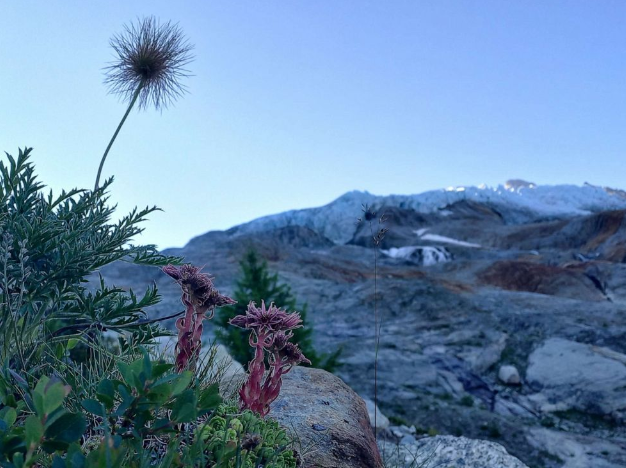Achieving net-zero emissions by 2050 could drastically curb glacial retreat.
Scientists are beginning to better understand the consequences of melting glaciers on humans, species of all kinds and the ecosystem in which they live.
Glaciers are disappearing all over the world due to climate change, and the Arctic is warming twice as fast as the rest of the world. Under a high-emissions scenario, half of the area covered by glaciers outside the Antarctic and Greenland ice sheets could disappear by the end of the century — a retreat the size of Nepal and Finland, according to a study published in Nature on Wednesday.
If greenhouse gas emissions are not severely reduced, shifting of the glaciers will come “quite fast,” prompting a rapid ecological shift as well, Nicolas Lecomte, research chair in Polar and Boreal Ecology and professor of biology at the University of Moncton in New Brunswick, Canada, who peer-reviewed the paper, said.
As the glaciers retreat, they could give way to new, “novel” ecosystems with emerging habitats that welcome cold-adapted species from regions farther south that become too warm for them to survive but also kill off species that rely on the ice and frigid atmosphere, Lecomte told ABC News.
The glaciers themselves house habitats for wildlife, including for microorganisms that are unique to individual glaciers, Lecomte said.
The species living near glaciers could become extinct, as scientists anticipate significant loss of species and decline of populations, Lecomte said.
“In places like the Alps in Europe or in the Himalayas, where you have this pocket left of what a cold climate can be, these species are kind of stuck and cannot move much,” Lecomte said. “So these are places where the warming would be completely out of phase with their adaptation and evolution.”

Other cold-adapted species displaced by warming else will be able to seek refuge in these new ecosystems. But it is a “very narrow range” of species who will be able to relocate, such as mammals and birds that have “room to move around,” Lecomte said.
And they will need ample time to do so, Lecomte said, adding that the migration will not occur as rapidly as the predicted warming and deglaciation.
“But it will be just a temporary shelter for them, because that place will also change over time very quickly,” he said.

The habitats left by the melting glaciers will be classified as 78% terrestrial, 14% marine and 8% freshwater, according to the study.
Humans will also be affected by disappearing glaciers, Lecomte said. In many parts of heavily populated regions, glaciers are the main water source for communities, because they feed some of the biggest rivers in the world.
Retreating glaciers will make these main water sources unstable and could also cause more catastrophic flooding events due to glacial flood lake outbursts, which recently occurred in Alaska, flooding the Mendenhall Lake and Mendenhall River and destroying homes near state’s capital.
“That is very difficult to predict, but likely to come,” Lecomte said.

The researchers used a glacier evolution model with glacier outlines, digital elevation models of subglacial terrain and climatic data to predict the response of each individual glacier to climate scenarios until 2100. The model is able to predict the characteristics of emerging ecosystems in deglaciated areas, which were classified into marine, freshwater or terrestrial categories, according to the paper.
The modeling predicts that deglaciation will occur at a similar rate until 2040, regardless of the climate scenario, the researchers found. After 2040, estimates of glacial retreat diverge depending on the severity of emission release.
Under a high-emissions scenario, in which emissions triple by 2075, about half the area covered by glaciers in 2020 glacier could be lost by 2100. The deglaciation could be curbed if emissions are curbed drastically, in which net-zero is achieved by 2050, reducing the loss to 22%, according to the paper.
In addition to limiting deglaciation, resources and focus should be given to protecting these newly forming ecosystems to secure their future, the researchers argued.
